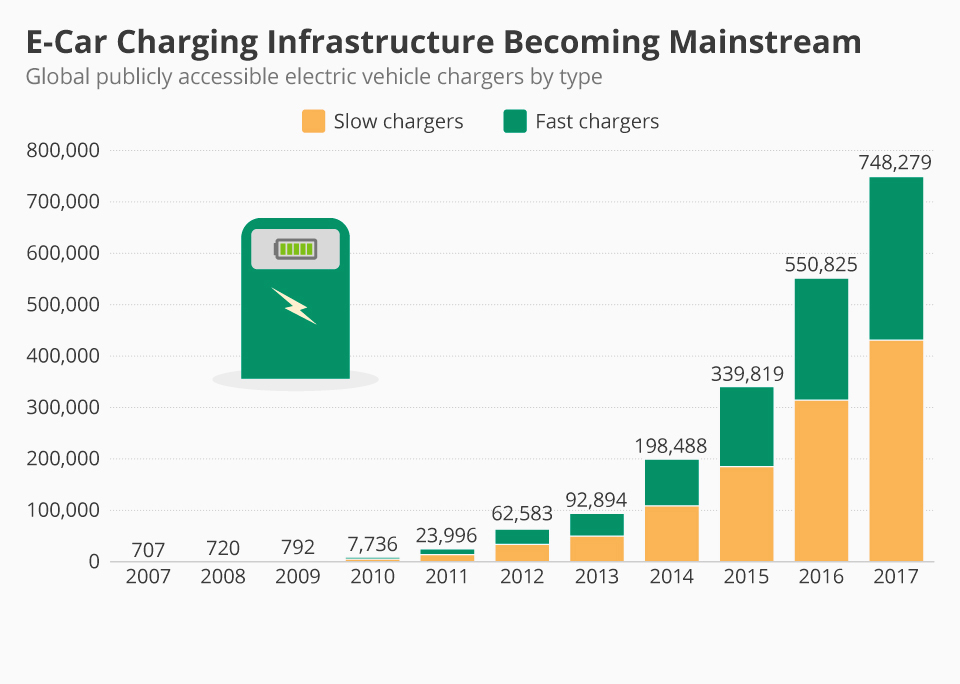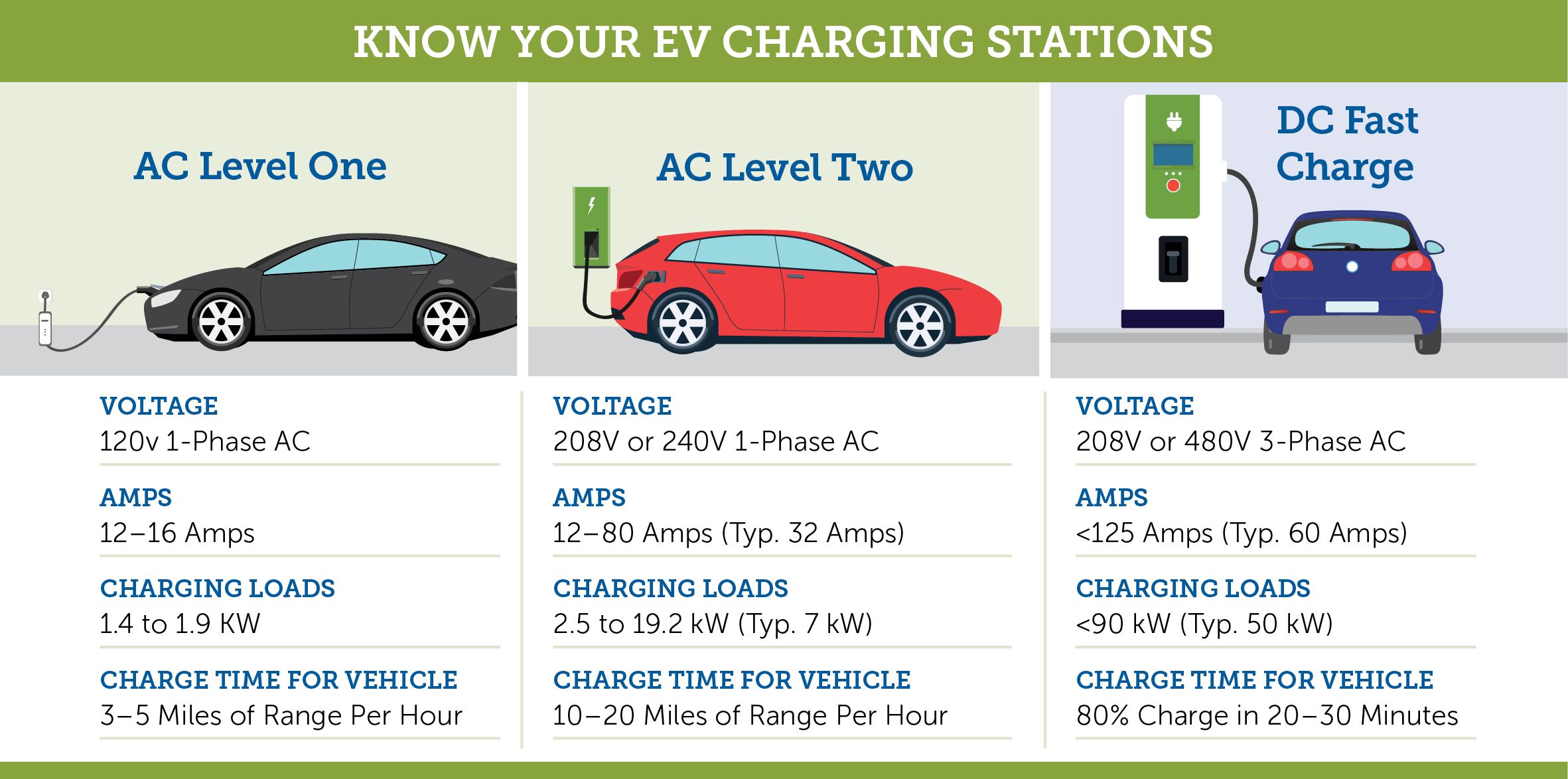EV CHARGING STATIONS SAVINGS
Because residential charging is convenient and inexpensive, most plug-in electric vehicle drivers do more than 80% of their charging at home. Charging in a single-family home, usually in a garage, allows you to take advantage of low, stable residential electricity rates. The cost to run your car over the course of a year can be less than running an air conditioner.
COSTS TO CHARGE AT HOME
Fuel costs for EVs are lower than for conventional vehicles. Based on the national average of 12.6 cents/kwh, fully charging an all-electric vehicle with a 100 mile range and depleted battery would only cost about the same as operating an average central air conditioner for six hours. Because plug-in hybrid electric vehicles have smaller batteries, each individual charge costs even less. General Motors estimates the annual energy use of a Chevy Volt is 2,520 kWh, which is less than required for a typical water heater. In comparison, over the past ten years, U.S. regular conventional retail gasoline prices have fluctuated from below $1.50 to over $4, squeezing annual household budgets by as much as $1,500 per average passenger car. If you charge primarily at night and your utility offers special off-peak rates, your costs may be even lower.
Rapid growth in the popularity and support of EVs enables business, property owners and multi-unit residential properties enables them to be ahead of the curve in providing a very attractive amenity for their customers, guests, employees and residents. Bloomberg New Energy Finance reports that electric cars will account for 54% of all new car sales by 2040. By the late 2020s, EVs will have lower lifetime costs and be cheaper to buy than the typical internal-combustion-engine car that most people drive today.
What are the types of charging?
Level 1—Home Charging:
Level 1 charging cords are standard equipment on a new EV. Level 1 charging only requires a grounded (three-prong) 120V outlet and can add about 40 miles of range in an eight-hour overnight charge. Overnight Level 1 charging is suitable for low- and medium-range plug-in hybrids and for all-electric battery electric vehicle drivers with low daily driving usage.
Level 2—Home and Public Charging:
Level 2 charging typically requires a charging unit on a 240V circuit, like the circuit used to power a common electric clothes dryer. The charging rate depends on the vehicle’s acceptance rate and the maximum current available. With a typical 30 amp circuit, about 180 miles can be added during an eight-hour charge.
Level 2 chargers are the most common public chargers, and you can find them at places like offices, grocery stores, and parking garages. Public Level 2 chargers have a standard EV connection plug that fits all current vehicles, except for Teslas, which require an adapter.
DC Fast Charging—Public Charging:
DC fast charging is the fastest currently available recharging method. It can typically add 50 to 90 miles in 30 minutes, depending on the station’s power capacity and the make of EV.
Tesla’s Superchargers are even faster, adding up to 170 miles of range in a half hour. DC fast chargers are most useful for longer trips, cars in use most of the day (like taxis), and drivers who have limited access to home recharging.
DC fast chargers use three different plug types and are not interchangeable. Japanese automakers typically use the CHAdeMO standard; most European and American makers use the CCS system. Tesla’s Supercharging stations use a proprietary connector specific to their vehicles.
How long does it take to recharge?
The length of time required to recharge depends on two factors: how much energy has been used and the power output of the charger. A Level 1 charger (120 volts) can replace about 4-5 miles of driving each hour of charging. Plug-in hybrid vehicles often have an electric range of 20-50 miles, so recharging even a fully depleted battery can be done in eight hours. Level 2 chargers are faster, delivering about 15-25 miles of range per hour. These chargers can fully recharge most long-range battery electric vehicles during an eight-hour charge. Using a DC fast charger allows for rapid recharging at public stations, adding 50 to 170 miles of range in 30 minutes (depending on the power output of the station and vehicle capacity).
It’s important to note that most drivers will go less than 50 miles a day, so even a relatively slow Level 1 charger will meet the daily recharging needs of most people wanting to switch from gasoline to an electric car.


